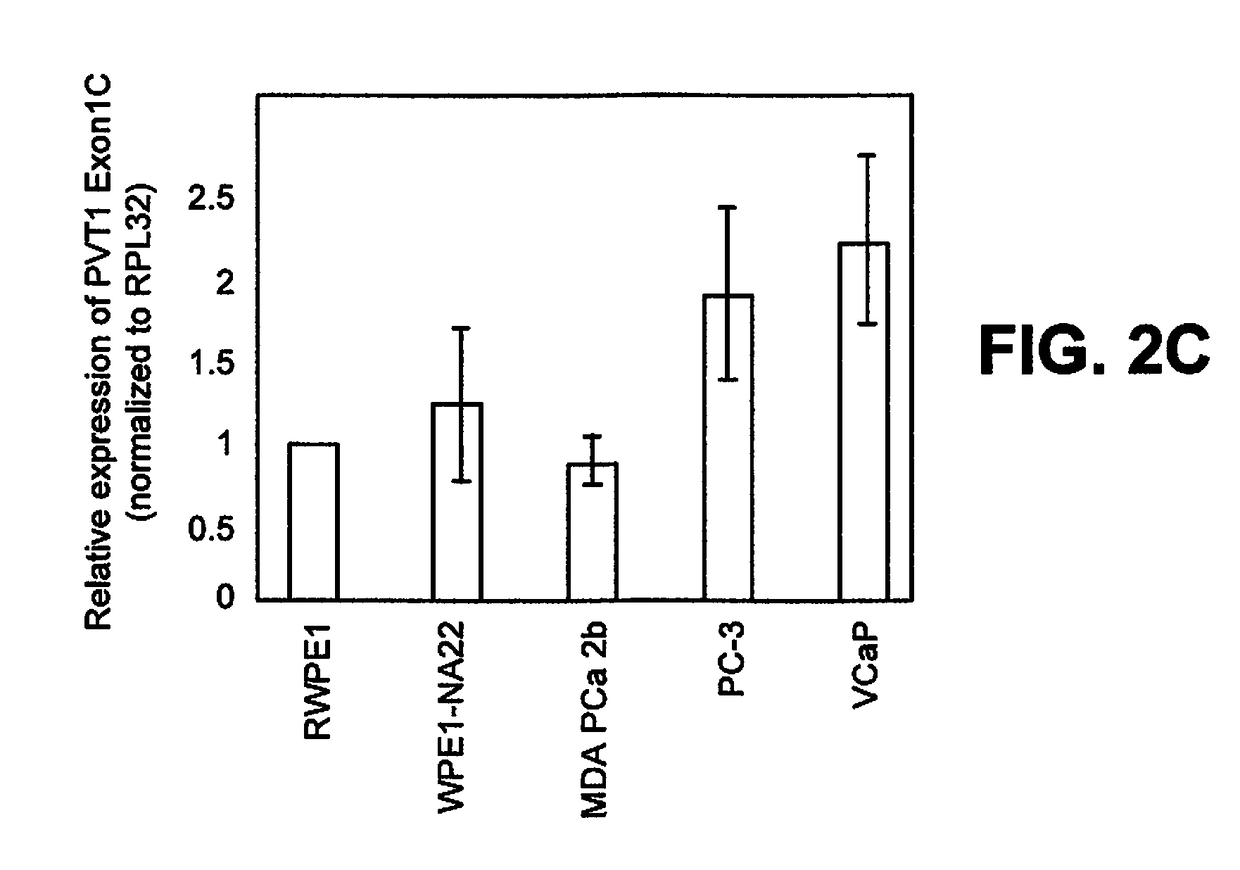Methods of using pvt1 exon 9 to diagnose and treat prostate cancer
a prostate cancer and exon 9 technology, applied in the direction of microbiological testing/measurement, dna/rna fragmentation, biochemistry apparatus and processes, etc., can solve the problems of complex and multi-faceted pca disparities, the number of non-protein coding genes, and the importance of african ancestry
- Summary
- Abstract
- Description
- Claims
- Application Information
AI Technical Summary
Benefits of technology
Problems solved by technology
Method used
Image
Examples
Embodiment Construction
[0026]Prostate cancer has been shown to be associated with single nucleotide polymorphisms around regions 2 and 3 of the 8q24 human chromosomal region. The non-protein coding gene locus Plasmacytoma Variant Translocation 1 (PVT1 ) is located at 8q24 and is overexpressed in PCa and, therefore, is also a candidate biomarker to explain the well-known disparity among males of African ancestry. PVT1 has at least twelve exons that make separate transcripts which may have different functions, all of which are, at present unknown, in PCa. The disclosed study determined if any PVT1 transcripts play a role in aggressiveness and racial disparity in PCa. A panel of seven PCa cell lines was used, including three derived from males of African ancestry. Ribonucleic acid extraction, complementary deoxyribonucleic acid synthesis, and quantitative polymerase chain reaction (qPCR) were performed to evaluate expression of all twelve PVT1 exons. Each qPCR was performed in quadruplicates. At least four s...
PUM
| Property | Measurement | Unit |
|---|---|---|
| small interfering ribonucleic acid | aaaaa | aaaaa |
| primary structure | aaaaa | aaaaa |
| structure | aaaaa | aaaaa |
Abstract
Description
Claims
Application Information
 Login to View More
Login to View More - R&D
- Intellectual Property
- Life Sciences
- Materials
- Tech Scout
- Unparalleled Data Quality
- Higher Quality Content
- 60% Fewer Hallucinations
Browse by: Latest US Patents, China's latest patents, Technical Efficacy Thesaurus, Application Domain, Technology Topic, Popular Technical Reports.
© 2025 PatSnap. All rights reserved.Legal|Privacy policy|Modern Slavery Act Transparency Statement|Sitemap|About US| Contact US: help@patsnap.com



